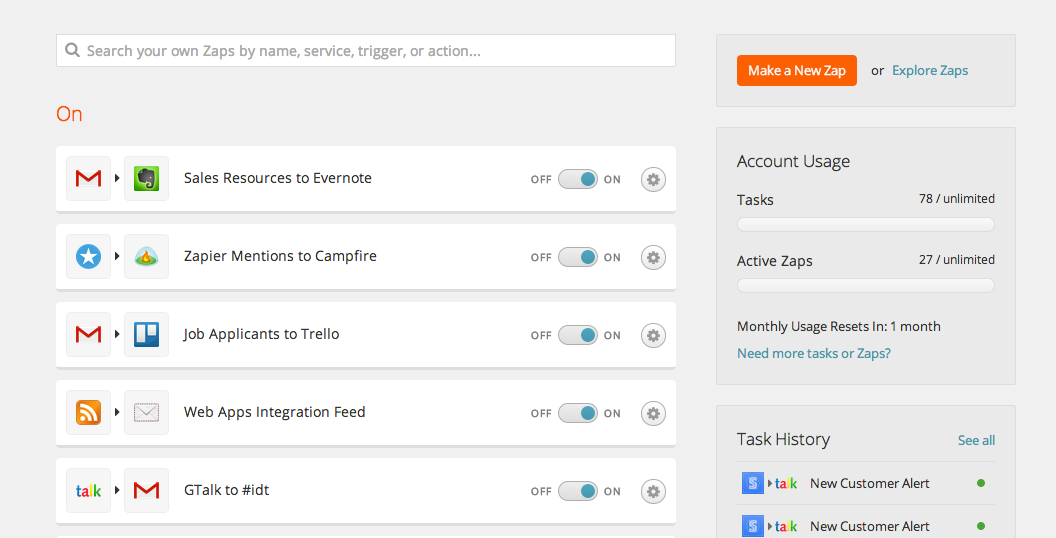The Top 5 No-Code Tools for Startups [2022 Guide]

A great idea without implementation will always be just that - a great idea. So if you’ve got a startup idea, you’ll need tools.
If you’re ambitious, you might struggle to choose the right tool (or programming language) to build your business. Sure, you can use off-the-shelf software solutions, but they’ll often offer features that you don’t need or lack features that you do. So, in other words, you might struggle to find that sweet spot.
That’s where no-code tools come in. Build custom apps or create an awesome MVP! It’s time we showed you the top 5 no-code tools for startups.
Quick Breakdown: The Best Startup No-Code Tools Compared
| Use case | Ease of use | Pricing | |
| Webflow | Build a responsive website with a drag & drop editor. | Medium. You don’t have to be a web dev, but you’ll need tutorials. | Free plan. Paid plans start from $14/mo. |
| Zapier | Automate everything. Build user flows and integrate different apps. | Medium, depending on what you want to automate. SQL and JSON knowledge preferable. | Free plan. Paid plans start from $25/mo. |
| Airtable | The spreadsheet to rule them all. Use it as your project management HQ or turn it into a database with simple automations. | Very easy to use, even if you never automated anything. | Free plan. Paid plans start from $10/user/mo. |
| Bubble | Drag & drop your way to the MVP! Perfect for building the front-end app interface. | The easiest app for non-tech startup people who need to build an app fast. | Free plan. Paid from $25/mo. |
| ClickUp | Perfect for scaleups who want to gather their data, optimize their processes, and collaborate. | Depends on the features you want to use it for. Super simple for collaboration, a bit tougher for automation and building. | Free plan. Paid plans start from $5/user/mo. |
| Sheet Best | Get off the ground super fast by turning your spreadsheets into REST APIs. Then, plug them into your front-end app, and you’re ready to launch! | Sheet Best is really straightforward - there are even tutorials to GET and POST data. | Free plan. Paid plans start from $9,99/mo. |
Why Are No-Code Tools Better than Sliced Bread?
- No-code tools improve startup collaboration. With traditional development, engineers build solutions based on specific needs. Unfortunately, there’s often a barrier between devs and users (even if they’re your team members), so vital information gets lost. No-code tools allow IT teams and users to work together to create applications for specific use cases.
- Higher accessibility. Because no-code tools require little to no specialist skills or knowledge, they make it possible for non-tech users to create custom applications that meet their needs. Building an app won’t be problematic, even if you’re not very technical.
- No-code tools offer more flexibility. Building a tool or a website from scratch is expensive and time-consuming. You have to commit to a feature before you build it. If you run an early-stage startup, you may need more data to make that decision, so no-code is a fantastic compromise that offers more flexibility. You’ll be able to add to the feature if it proves viable or avoid regret if you choose a different direction.
- No-code is more cost-effective. No-code development eliminates the high costs of traditional application development. Another contributor to lower costs is that no-code tools often require less maintenance than custom-developed applications.
- Faster time to market. If you’re in the MVP stage, every minute counts and no-code can show you the data faster. As you scale, no-code development will allow you to improve your product more quickly.
The Top 5 No-Code Tools for Startups
1. The Best No-Code Web Design Tool for Startups: Webflow
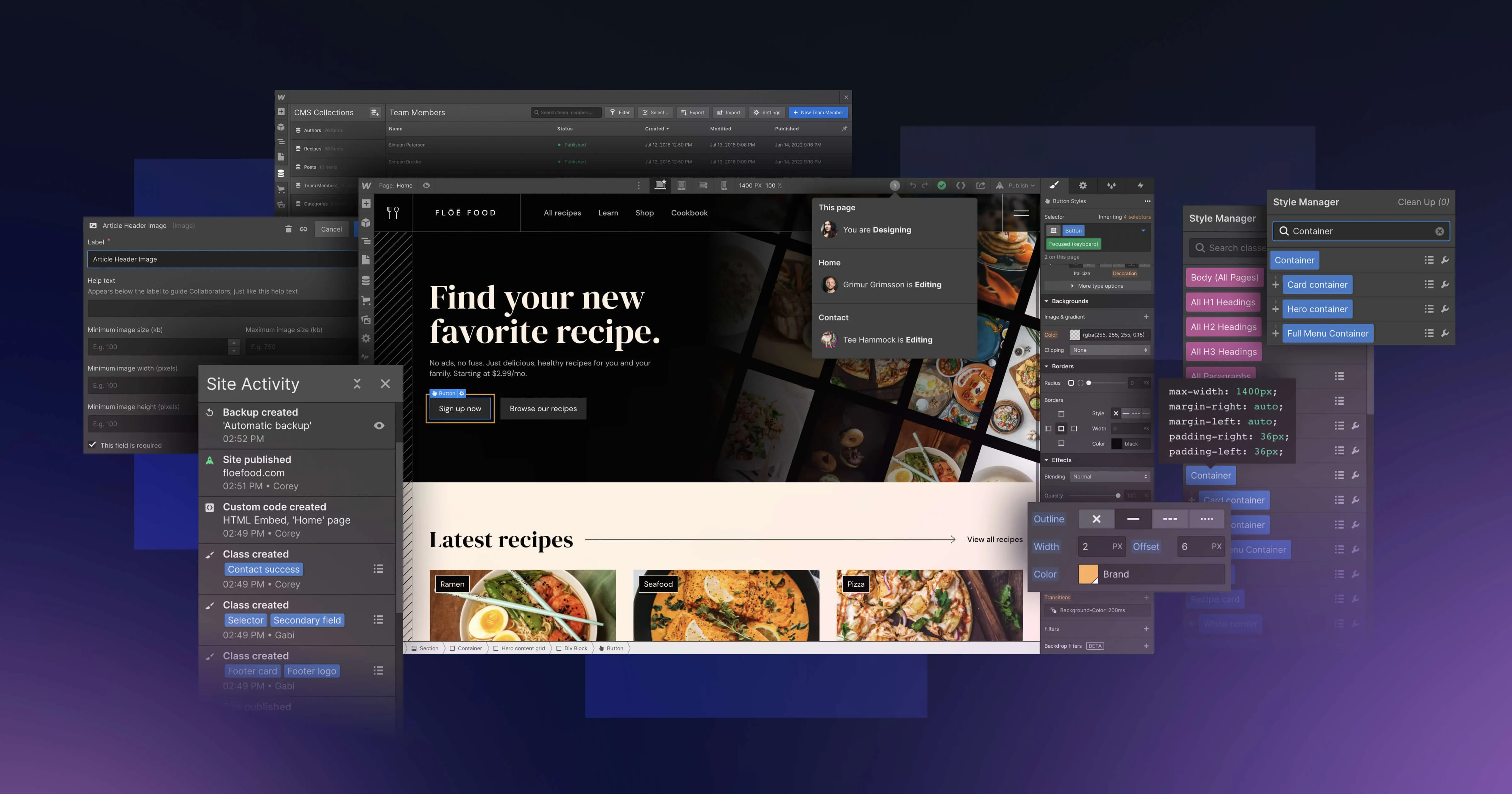
A website is one of the first things you’ll need for your startup. And it’s here where Webflow shines.
It’s a platform that helps you build responsive websites without writing a single line of code.
You can create a modern and professional website for your business in a fraction of the time required to hire a web developer. And that’s not even to mention that it will be far more affordable.
One of the significant benefits of the platform is that it offers a massive range of templates you can use to get started. It’s also highly customizable, so you can create almost any site you can dream of.
2. The Best No-Code Automation Tool for Startups: Zapier
When you use more than one application in your business, which you likely will, you will typically need to integrate these applications to make your data available across your entire business.
While many applications offer built-in connectors that allow you to do this, many don’t. And that’s why you need Zapier.
Zapier is an integration and automation tool that allows you to integrate different applications and create automations that make your business more efficient.
For example, you can automate log-in flows with Zapier and one Airtable spreadsheet.
Remember, despite being a no-code tool that offers several benefits, Zapier might have a steep learning curve if you’re not technically inclined.
3. The Most Versatile Startup Spreadsheet: Airtable
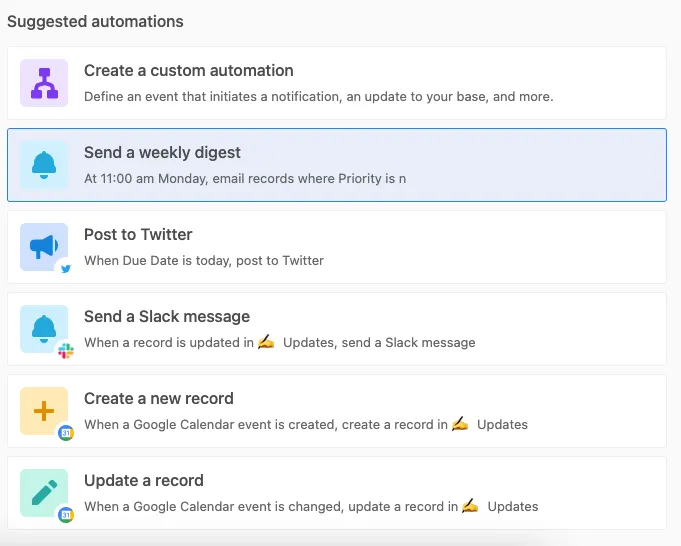
Think of Airtable as a spreadsheet with database features. It initially started as a project management tool to help businesses organize their data. These days, you can use it to create and automate workflows.
For example, if you need your clients to sign a contract and then fill out an intake form, you can automate all the steps through Airtable.
Airtable also offers a lot of pre-made templates that help you create these workflows.
Combined, all these features allow your team to collaborate better and be more productive. One thing that hampers collaboration, though, is the fact that it doesn’t offer any communication features.
4. Build Your Startup with Bubble
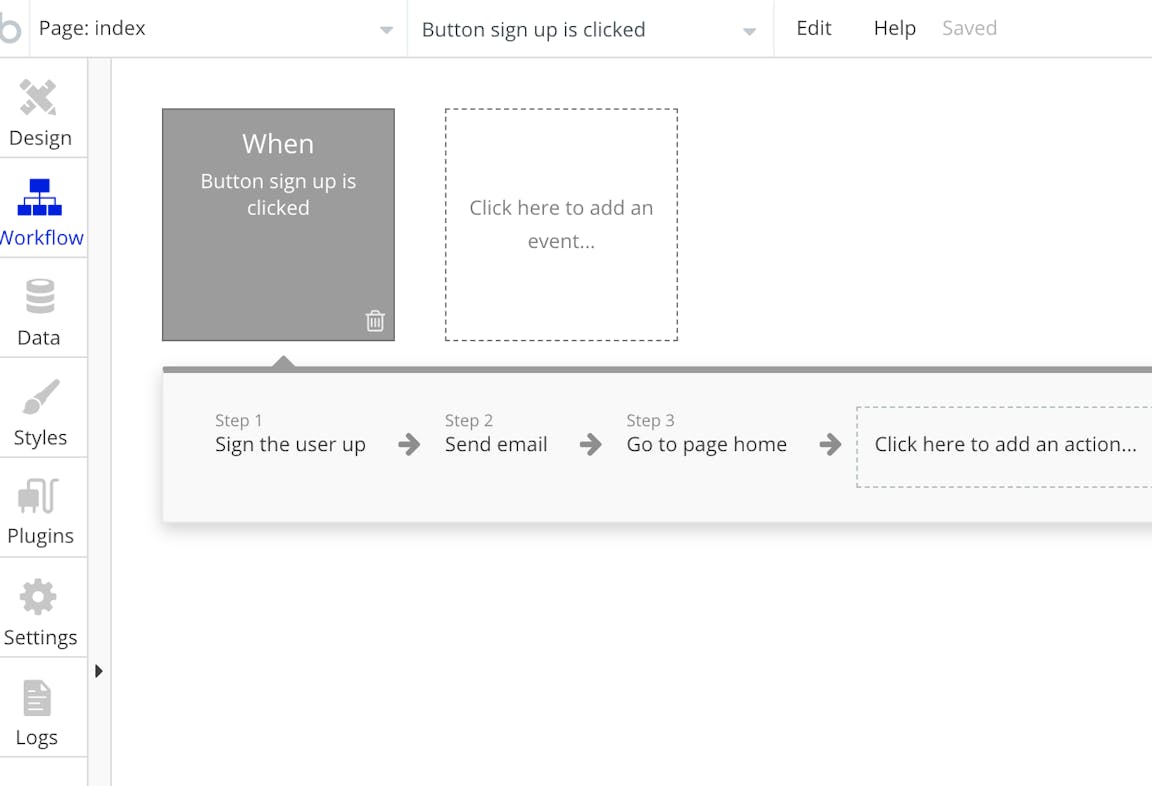
Webflow can help you build a website for your business, but Bubble takes no-code tools for startups one step further and allows you to create web and mobile applications without the need to write a single line of code.
Bubble also takes care of your app hosting and offers API integrations with various other applications.
For example, you could transform your Google Sheets into an app with Sheet Best’s API, and then use Bubble to create an interface for your users.
While Bubble makes it easy to create and launch apps, it has a major drawback. You’ll have to rely on its pre-made templates to create your app, which limits customization and flexibility.
5. The Best No-Code Tool for Scaleups: Clickup
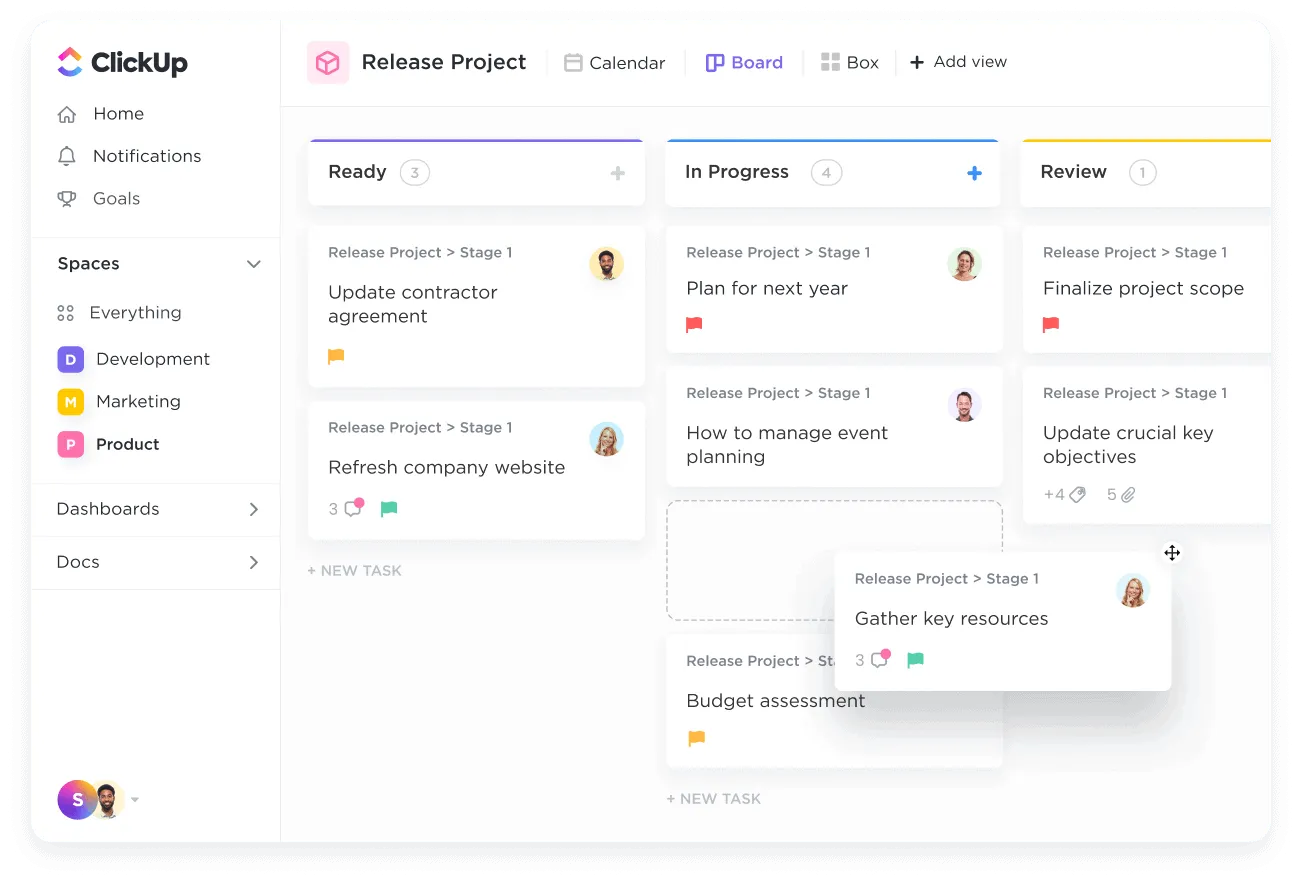
Like Airtable, ClickUp has exceptional project management and collaboration capabilities. However, unlike Bubble or Zapier, ClickUp focuses on creating custom productivity applications for your business.
For example, it offers more than 1,000 native integrations, allowing you to source data from several applications and extract insights from them. You can optimize your processes based on your new knowledge, which is handy when transforming into a scaleup.
The platform also offers many pre-built templates you can use and customize using its drag-and-drop editor.
Bonus: Do You Want to Build Your MVP Really, Really Quickly?
Look, sometimes you don’t want the bells and whistles. Sometimes you just want to validate your product idea and put it in front of users without worrying about scaling.
Use Sheet Best to turn your spreadsheets into REST APIs quickly and easily.
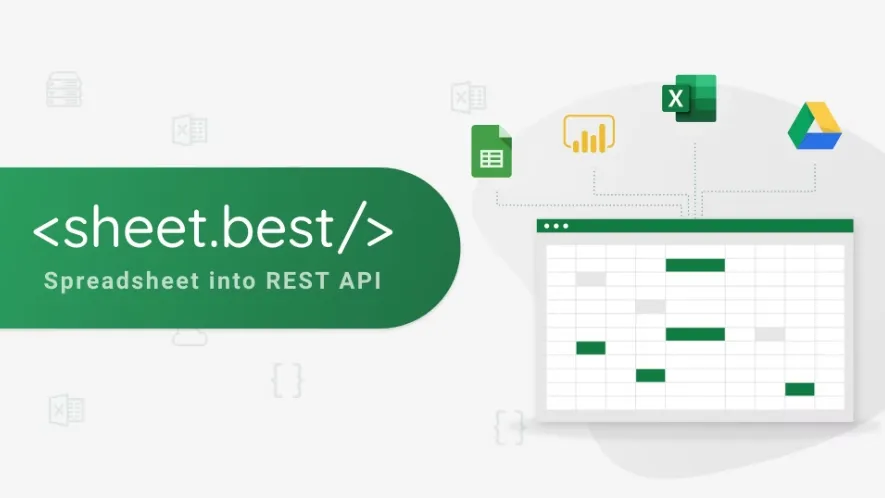
You can then use this API for almost any purpose, including building the backend for web and mobile applications, chatbot conversation databases, a CMS for your website, and so much more.
All you need to get started is an Excel or a Google Sheets spreadsheet. Let Sheet Best do its magic, plug it into Bubble, and soon enough, you’ll have an app and a startup idea ready to validate!
To learn more about Sheet Best, get started for free today.
